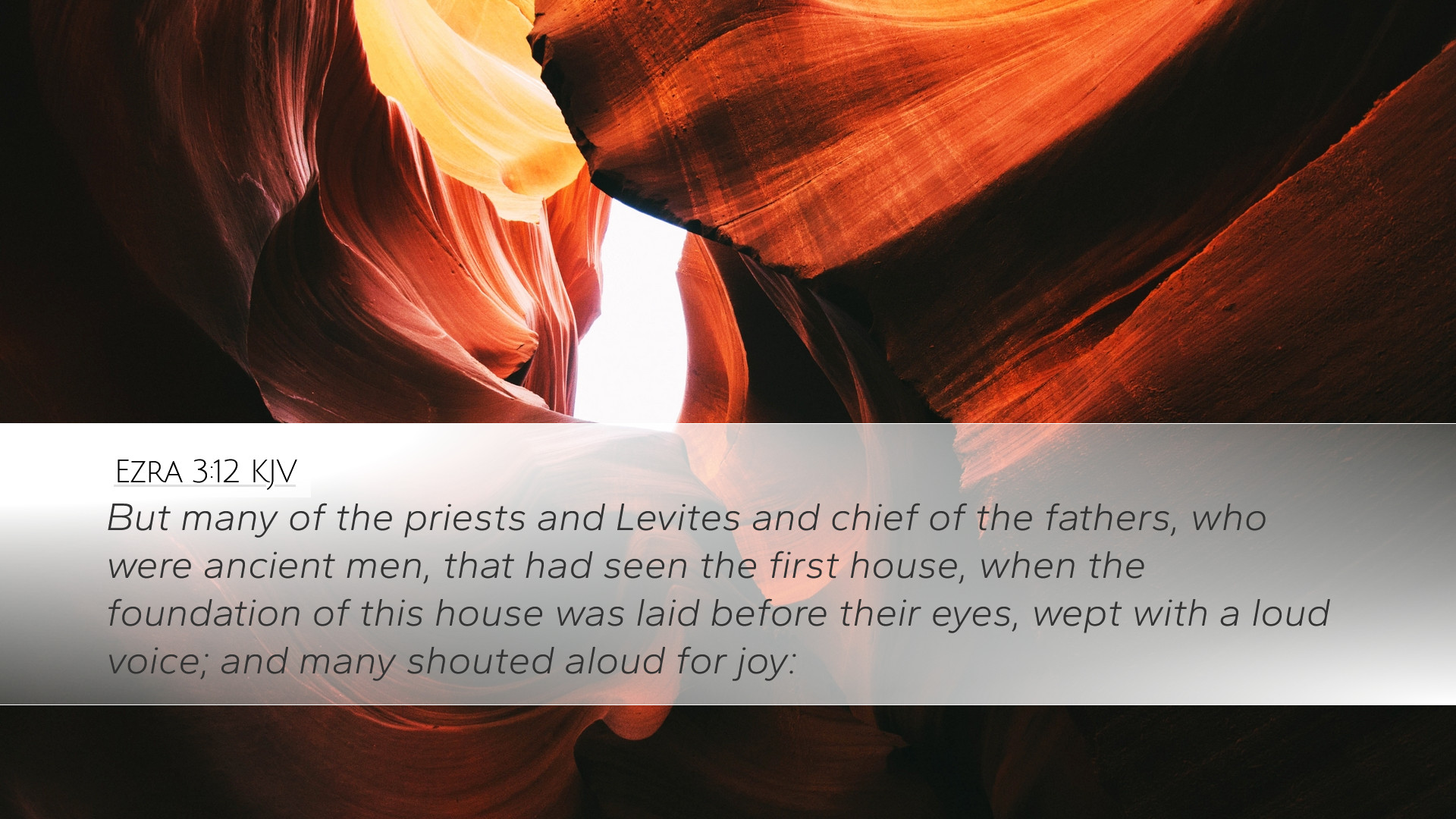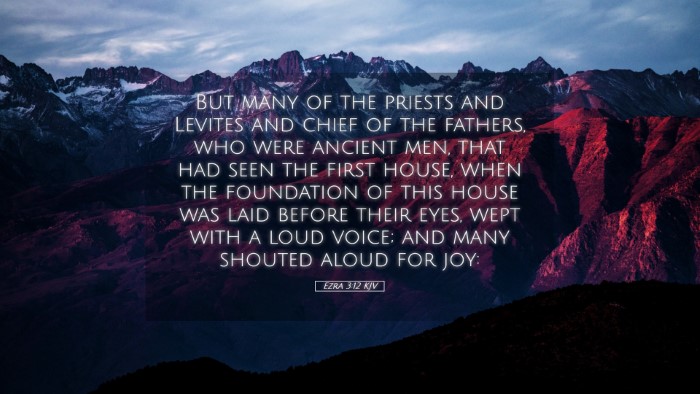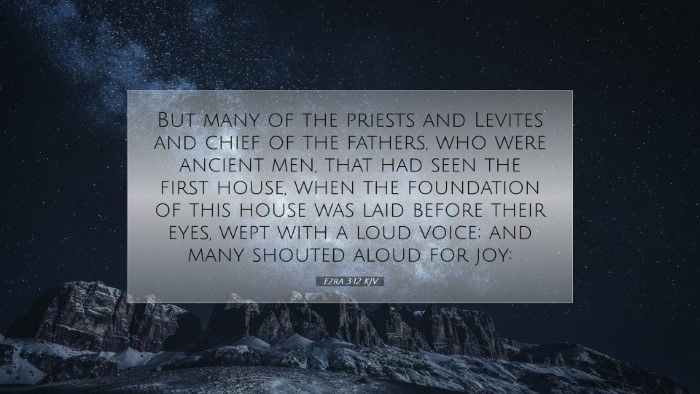Old Testament
Genesis Exodus Leviticus Numbers Deuteronomy Joshua Judges Ruth 1 Samuel 2 Samuel 1 Kings 2 Kings 1 Chronicles 2 Chronicles Ezra Nehemiah Esther Job Psalms Proverbs Ecclesiastes Song of Solomon Isaiah Jeremiah Lamentations Ezekiel Daniel Hosea Joel Amos Obadiah Jonah Micah Nahum Habakkuk Zephaniah Haggai Zechariah MalachiEzra 3:12
Ezra 3:12 KJV
But many of the priests and Levites and chief of the fathers, who were ancient men, that had seen the first house, when the foundation of this house was laid before their eyes, wept with a loud voice; and many shouted aloud for joy:
Ezra 3:12 Bible Commentary
Commentary on Ezra 3:12
Ezra 3:12 states: "But many of the priests and Levites and chief of the fathers, who were ancient men, that had seen the first house, when the foundation of this house was laid before their eyes, wept with a loud voice; and many shouted aloud for joy."
Contextual Overview
The verse occurs during a pivotal moment in Israel's history when the exiles returned from Babylon to rebuild the temple in Jerusalem. The rebuilding signifies restoration and renewal after a long period of desolation. The response of the people, illuminating their emotions amidst this physical construction, reflects deeper spiritual truths.
Interpretations of Ezra 3:12
This verse reveals a duality of emotions—joy and sorrow—concerning the reconstruction of the temple. The reactions of the older generation, who remember the former temple, highlight the complex human responses to restoration.
- Historical Context: The older priests and Levites are likely recalling the grandeur of Solomon's temple, now contrasted with the less ornate new foundation (Matthew Henry).
- Emotional Responses: The interaction of weeping and shouting possibly serves to communicate the generational differences in experiencing loss and restoration (Adam Clarke).
- Spiritual Significance: The weeping may signify regret for past sins and losses, while the shouting expresses hope and excitement for God's restored presence among His people (Albert Barnes).
Insights from Commentators
Matthew Henry emphasizes the weight of the moment, suggesting that the weeping of the older generation is a natural and healthy response to the realities of loss. He interprets this as a poignant reminder of how the grandeur of the past, coupled with the acknowledgment of present blessings, can provoke both sorrow and joy.
Adam Clarke notes that the weeping among the Elders signifies a deep emotional connection to the historical temple. He posits that their memories invoke feelings of nostalgia, considering the former temple's beauty—an echo of what once was compared to the humble beginnings of the new temple.
Albert Barnes adds depth by exploring the nature of collective memory and corporate worship. He posits that such mixed emotions foster a community's resilience and hope, suggesting that the beauty of worship lies in harmonizing remembrance and anticipation.
Theological Reflections
This verse invites theological reflection on the relationship between history and the present. It prompts believers to engage with their memories of God’s faithfulness while fostering hope for future manifestations of His glory.
- God's Faithfulness: The rebuilding signifies God's promise to restore His people and their worship, fulfilling His covenant (Matthew Henry).
- Community Emotion: The emotional tapestry woven in the assembly illustrates the communal nature of faith; members hold unique perspectives that enrich the overall experience of worship (Adam Clarke).
- Contrast and Continuity: The juxtaposition of past and present serves to remind the faithful that while experiences of God may vary, His nature remains constant (Albert Barnes).
Application for Pastors and Leaders
For pastors and spiritual leaders, this passage offers profound insights into handling church dynamics when there are contrasting perspectives on ministry and worship:
- Acknowledge Emotional Responses: Leaders should be sensitive to the emotional responses of congregants, recognizing the valid reasons for both grief and joy in their spiritual journey.
- Encourage Intergenerational Dialogue: Facilitate conversations between different generational groups, allowing shared experiences of God’s faithfulness to enrich community life.
- Emphasize Restoration: Create a culture that embraces restoration and renewal, teaching that God’s work in the past informs hope for the future.
Conclusion
Ezra 3:12 encapsulates the mixed emotions that arise from significant spiritual events, highlighting how community awareness of history enriches worship. The interplay of weeping and joy can serve as a model for addressing change within the church today, encouraging a deep engagement with God’s ongoing story in the life of His people.


